Atlantis Gate Read online
Page 2
They’d reached Lae, New Guinea, on 29 June, over two-thirds of the trip done and seven thousand miles to go. But the last legs were all over the Pacific, the most dangerous part of the journey. At Lae, she had cabled her last article to the Herald Tribune and her last journal entry to George.
“I need a fix,” Amelia said. “We’re getting close, and we’re not going to have fuel to turn around if we miss it on the first pass.”
“I know that.” Noonan’s voice was tight. They were both exhausted. “I don’t know why I can’t pick up the ship. The equipment is working correctly,” he added defensively.
There was a smudge on the ocean ahead. Earhart’s heart leapt as she though it must be smoke from the Itasca. She grabbed the transmitter and keyed it. “K-H-A-Q-Q calling Itasca. I see smoke. Are you making smoke? Over.”
There was no answer.
Noonan had a set of binoculars, and he put them to his eyes. “I don’t think that’s a ship’s smoke.”
“An island?” Earhart asked.
“It’s like fog.”
“It can’t be fog,” Earhart said. “It’s too small.”
“It’s getting bigger,” Noonan said.
Even without the glasses, Earhart could see that it was growing larger. There was a yellowish tinge to the fog, and it was billowing upward and out ward at an unnatural rate.
“I’m getting something,” Noonan said. He had his hands over his headset, listening intently.
Amelia’s gaze shifted between the compass and the growing cloud on the horizon as she waited.
“I don’t know what it is,” Noonan finally said. “A lot of static, then what sounds like Morse Code, but I can’t--” he fell silent once more as he focused on listening, his eyes closed. “It’s clearer now.” Noonan opened his eyes and picked up a pencil and began to record the letters in the flight log, speaking them out loud, as he heard the dashes and dots.
“T-U-R-N-O-F-F-R-A-D-I-O-O-R-D-I-E.”
“What?” Earhart was so tired her brain couldn’t make immediate sense of the letters.
“Turn off radio or die,” Noonan succinctly informed her.
“We can’t. We won’t be able to navigate.”
“We haven’t’ been navigating for hours, “ Noonan noted.
“Who’s sending?” Earhart was confused. If it wasn’t the Itasca, who was out here in the middle of nowhere?”
“I have no idea.”
The fog was now less than five miles ahead and was huge, blocking their path now at twelve thousand feet and continuing to climb. In all her flights, she had never seen anything like it. She had a feeling they shouldn’t fly into it, but if she changed course, she would burn fuel and get off their track to Howland Island. A startling thought crossed her mind: Had she already flown past Howland Island and the Itasca? She pushed that negative thinking aside. She knew exactly how fast they had been going and how long they had been in the air. But, she argued with herself, there was the possibility of a strong headwind or tailwind, multiplied by the nineteen hours they’d been in the air, skewing her math.
“I think we should shut the radio off,” Noonan suggested, drawing her back to the immediate problem. “I don’t like the looks of that.”
“Find out who’s sending,” Earhart ordered.
Noonan had a knee key on his thigh, and he tapped out a quick query in Morse, trying to get the identity of the sender of the message.
A golden beam slashed out of the fog directly for the Electra. Earhart reacted, pushing forward and dropping the nose of the plane. The gold beam missed them by less than ten feet.
“Stop transmitting!” she yelled as she pulled the plane out of the dive and banked hard left. The fog was now less than two miles away, a wall stretching as far as she could see north and south and reaching up at least fifteen thousand feet.
“What was that?” Noonan was flipping switches, cutting power to their transmitter and receivers.
Earhart noted the fuel gauges. Not much left, and she had no idea where they were. Glancing out the window, she noted that even though she was flying a parallel course, the fog was closer, which meant it was still expanding.
“I’m going to ditch,” she announced.
Noonan said nothing, knowing there really weren’t any other options. They had an inflatable raft on board, and it was best to go down while they still had engine power so she could have some control of the landing.
Earhart turned away from the strange fog and began descending. Fortunately, the water was relatively calm, the swell no more than half a foot. When they were ten feet above the waves, she began throttling back, slowing the plane to just above stall speed.
The Electra hit, bounced, hit once more, and again bounced into the air. Then they were down, both slammed forward against their seat belts as the water slowed the plane. Earhart cut power to the engines, and an eerie silence reigned, strange after so many hours in the air, the sound of the engines their constant companion. Her first thought was that silence was the sound of failure: she had fallen short of her goal. She shook that thought out of her head and knew she had to focus on the immediate problem, which was getting out of the plane. She unbuckled, knowing they had some time before the plane went down, as the empty fuel tanks would keep it afloat for a little while. Earhart got up and began gathering essential equipment.
Noonan opened the door below the right wing, then got the raft. Earhart stuck her head out the door and looked to the rear. The fog was still coming, now less than a quarter mile away. Noonan began to inflate the raft after tying it off to a wing strut, while she piled supplies next to the door. She considered making a distress call, but the memory of what had happened the last time she’d transmitted stopped her. When they didn’t arrive, the Itasca would come looking for her. And she knew her husband would get the president to launch a search.
“I hope whoever warned us is nearby,” she told Noonan.
“That wasn’t lightning that almost hit us,” he said.” It’s like someone shot at us.”
“With what?”
Noonan had the raft mostly inflated and was still pumping when the fog reached the tail of the plane. Earhart couldn’t see more than a couple of feet into it. The plane was beginning to settle deeper, water washing close to the doorway.
“Let’s go,” she said. “We can finish pumping once we’re away.” Then she remembered the photos and her journal. “Wait a second.”
She dashed back into the plane, ran to the cockpit, and grabbed the box containing the photos she had taken for the Navy and her journal. As she came back, she could barely see Noonan standing in the raft, holding on to the wing. She was just about to step through the door and into the raft when a long tentacle shot out the water and wrapped around Noonan, who gave a surprised yell. She froze in place.
“Help me!” He screamed as he was lifted into the air.
Another tentacle surfaced, searching along the bottom of the wing by feel. Then a half dozen more, like a forest of red, exploded out of the water. Earhart remained still, fear and self-preservation locking her in place inside the aircraft. She could see that there were what appeared to be mouths on the ends of the tentacles, about six inches wide, snapping open, revealing rows of razor-sharp teeth.
As she watched helplessly, one of those mouths struck Noonan in the chest and bore into him, blood spurting out around it. He screamed, his face rigid with pain, his back arching, trying to get away, but being held in place by the first tentacle wrapped around his body. Earhart staggered back in shock as the tip of the second tentacle came out of Noonan’s back, teeth covered in his blood, still snapping. Noonan slumped, lifeless.
One of the other tentacles turned toward her, and she finally moved, slamming the door shut. She heard tentacles slithering over the plane’s metal skin. Then she noted her feet were wet. There was about a foot of water inside, and the level was getting higher as the plane slowly sank.
She ran forward to the cockpit and looked out. The sea w
as churning with red arms. Looking back, there was no sign of Noonan or the raft, and the plane was completely inside the fog.
Suddenly, a wide flash of gold came out of the fog slicing neatly through the tentacles in its path. In a second they vanished beneath the surface. A light illuminated the fog, pushing it away—but it was coming from below the plane. Earhart gasped as a curved black wall came out of the water, surrounding the plane in all directions. For several moments, Earhart couldn’t comprehend what she was seeing; then she realized, as more of the wall came out of the water and it curved inward, that her plane was in the middle of an opening on the top of what must be a great sphere.
The opening began to iris shut, and something solid touched the plane below, causing Earhart to stagger. When the opening was completely closed, she was in total darkness.
Then a blue glow suffused the plane, and she passed out.
CHAPTER THREE
THE NEAR PAST
26 April 1986 A.D.
Power. That was what had drawn Andrej Shashenka to Chernobyl. The ability to run a nuclear reactor and control power in its basest form, at the atomic level. Reactor Four was Andrej’s domain, and he was in the process of overseeing its shutdown for periodic maintenance. His was one of four reactors that made up the Chernobyl complex, each capable of producing one thousand milliwatts of power. Currently, power production from Four was down to two hundred milliwatts, well within the range of the positive void coefficient required for safe operation.
It was 0100 in the morning, the fifty thousand people living in the town of the same name next to the reactor asleep in their beds, including Andrej’s wife and three children. He had vacation beginning tomorrow, and he was taking his family to meet his twin brothers, Pytor and Felix, who served in the army. It would be the first time the three of them would be getting together since their mother’s funeral. He was anxious to finish the shutdown so he could turn the reactor over to the maintenance people.
Shutdown was a difficult balancing act of reducing power but at the same time drawing enough power from the reactor to keep the cooling system running to prevent the core from overheating. While the reactor was normally self-sufficient, providing the power to run its own cooling system, Andrej was in the process of shifting to generator power.
At exactly 0123, right after the power switch was completed, Andrej noticed the slightest dip in power readings. He scanned the rest of his vast control panel, making sure all was running properly, when Leona Kiril, his senior assistant, gave a startled yell.
“What’s the matter?” Andrej went over to her position.
In her shock, all she could do was point at the video monitor that displayed the view of the reactor core. A black triangle, fifteen feet on each side and ten feet high, was floating directly over the core rods.
“What the hell is that?” Andrej had never seen the like.
Gold beams came out of each corner of the triangle, flashing down to the rods. Alarms began going as the power dropped abruptly. At the same time, the lights in the control room went out, and all instruments went dead.
“Emergency backup!” Andrej yelled. His crew was trained to operate in the dark, and he could hear switches being thrown and people moving, but nothing happened.
“All power is down,” someone yelled.
If primary and emergency generators were down, that left only one choice. Andrej threw the switch taking the reactor off-line from the generators and back to reactor power. “Power up as quickly as possible,” he ordered.
The lights came back on along with instruments as the machines took power from the reactor, but what the gauges told Andrej froze his heart. Whatever the black triangle was, it was drawing power from the core faster than the core could produce it. Andrej knew they had scant seconds before things became critical in an inverse way. The reactor wouldn’t be able to provide enough energy to the cooling systems, which meant there would be a point at which the entire system would reverse very quickly. The core, getting hotter, would produce more and more power until it reached critical mass and exploded.
“Emergency shutdown!” Andrej screamed, knowing it was already too late. He slammed his fist down on the emergency reactor trip button.
“Power spike!” someone yelled.
Inside the reactor, power was doubling every second, faster and faster, until it was doubling every millisecond. Within four seconds, it reached critical.
The last thing Andrej saw was the black triangle on the video monitor. The gold beams still sucking from the core, and when the water in the core exploded into steam it destroyed the fuel elements, sending super hot, radioactive gas outward, blasting off the roof of the containment building and blowing through the walls into the control room, killing everyone instantly.
The white-hot graphite in the reactor caught fire, sending a radioactive cloud billowing into the air over a mile high.
The fire burned for days, pouring forty times the radioactivity released by the atomic bombs detonated at Hiroshima and Nagasaki into the atmosphere. Over five thousand tons of lead and stone were dropped by helicopters to both put out the fire and contain the radiation. In the process, many of the crews received fatal doses.
Besides the black triangle, there was another strange aspect to Reactor Four: the lead and stone seemed to hit an invisible, hemispheric wall covering the core and piled up around it. The same with the concrete that was poured next. Still, they dropped the concrete, covering the clear shield completely.
All of Europe was affected by the fallout, particularly in the north.
The world outcry over the accident and the shabby construction of the reactor was intense. Only a handful of people in the highest levels of the Russian government had a copy of the transmission sent out by the monitoring equipment just before the explosion and knew what had really happened.
Even while more cleanup operations were being run, a special unit was formed to monitor Reactor Four and the alien object within.
CHAPTER FOUR
THE PRESENT
The Ring of Fire encircles the Pacific Ocean, stretching over nineteen thousand miles. It is delineated by the volcanoes and fault lines that are the surface evidence of the split in the crust of the planet deep below. From New Zealand to New Guinea, the Philippines, Japan, arching around to the Aleutians, down the west coast of North America to South America.
The Ring is formed by tectonic plates, a theory that is relatively new in scientific circles, first postulated in the mid-1960s. The surface of the Earth, the lithosphere, is divided into nine major plates and a dozen smaller ones. The lithosphere floats on top of the mantle. Generally, each plate delineated a continent; all, that is, except for the Pacific, which encompasses several plates. The boundaries between plates produce one of three types of effects. Where two plates are going away from each other, they produce ridges where material come up through the split. When one plate slides under another, a subduction zone occurrs. Where two plates move in opposite parallel directions is a transform fault, a prime example being the San Andreas Fault along the west coast of the United States.
Along the Ring of Fire, all these things had been happening for millennia. It was called the Ring of Fire because volcanoes circled almost the entire Pacific Rim, where plates met and magma boiled up between them. The forces involved in the Ring were staggering in concept, but they played out over eons, rarely noted by man except when an earthquake such as the one that leveled San Francisco in 1906 occurred or a volcano such as Mount St. Helens in Oregon erupted. And those were isolated events, just a fraction of the length of the ring and its potential power.
The Shadow had shown a mastery of manipulating these forces by firing a salvo of nuclear weapons from a captured American submarine at Iceland, hitting along the tectonic line down the middle of the island and literally splitting it in half. It had barely been stopped from continuing the destruction along the Mid-Atlantic Ridge, which would have devastated the east coast of North America and Euro
pe.
Now, out of the Devil’s Sea gate, off the coast of Japan new lines of probing were reaching out, noting the composition of the Ring of Fire, the position of volcanoes and their status, fault lines, and critical junctures.
The Shadow was readying a second assault on the planet.
*****
The probing by the Shadow was not unnoticed. Three miles below the planet’s surface, in northern Japan, a group of scientists led by Professor Nagoya was gathered around monitors, coordinating the data they were getting from the superkamiokande underneath their feet. They were near the top of the natural cavern, their computers, desks, and chairs set on a steel grate that covered a highly polished stainless steel tank sixty meters wide by sixty deep and filled with water. The walls of the tank were lined with twenty thousand photomultiplier tubes—PMTs. The tubes were very sensitive light sensors that could pick up a single photon as it traveled through the tank’s water.
The superkamiokande was a ring-imaging water Cerenkov detector. Cerenkov light was produced when an electrically charged particle traveled through water. The reason the superkamiokande was so far underground was in order to allow the miles of earth and rock above it to block out the photons emitted by man’s devices on the surface of the planet.
While Professor Nagoya and his coworkers knew little about the gates and the Shadow, they did know that activity by the Shadow produced muon emissions, which the superkamiokande could trace. Nagoya didn’t know yet why the gates produced muons or why the muons emitted did not decay as rapidly as physics said they should.
“The Shadow is checking the fault lines,” Ahana, Nagoya’s senior assistant, noted. She was a young woman with the sharpest mind Nagoya had ever interacted with. “Also volcanoes. Just like it did with the Mid-Atlantic Ridge,” she added, referring to what had happened just before the destruction of Iceland.

 Independence Day
Independence Day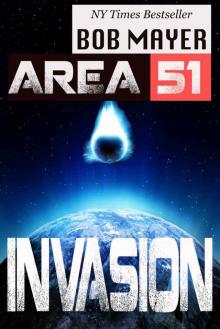 Invasion
Invasion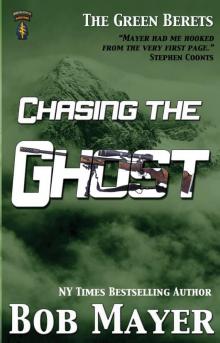 Chasing the Ghost
Chasing the Ghost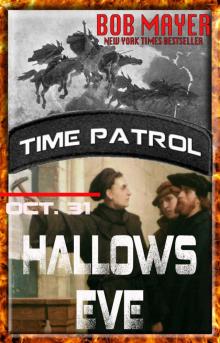 Hallows Eve
Hallows Eve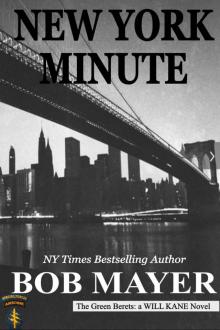 New York Minute
New York Minute Valentines Day
Valentines Day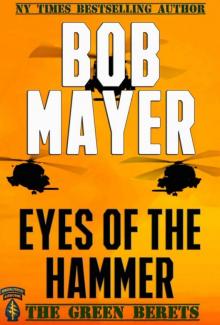 Eyes of the Hammer
Eyes of the Hammer Walk on the Wild Side
Walk on the Wild Side D-Day
D-Day Lawyers, Guns and Money
Lawyers, Guns and Money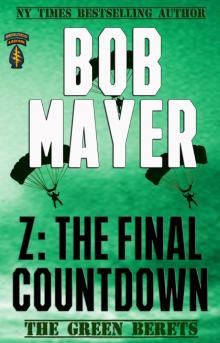 Z: The Final Countdown
Z: The Final Countdown Redemption: Area 51, #10
Redemption: Area 51, #10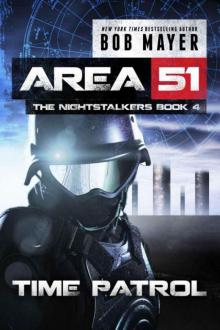 Time Patrol
Time Patrol Interstellar
Interstellar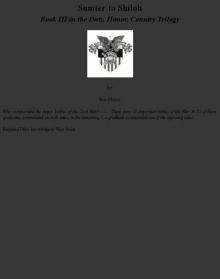 Sumter to Shiloh
Sumter to Shiloh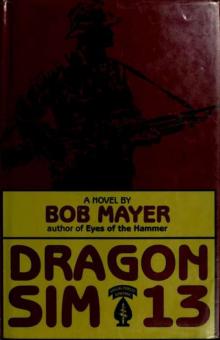 Dragon Sim-13
Dragon Sim-13 The Line
The Line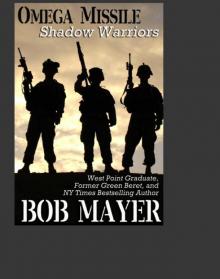 Omega Missile (Shadow Warriors)
Omega Missile (Shadow Warriors)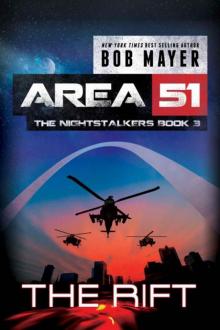 The Rift
The Rift The Jefferson Allegiance
The Jefferson Allegiance Project Aura
Project Aura Synbat
Synbat Ides of March (Time Patrol)
Ides of March (Time Patrol)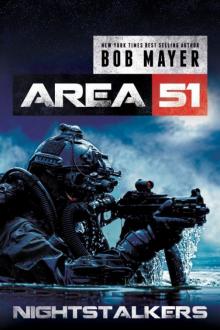 Nightstalkers a5-10
Nightstalkers a5-10 Lost Girls tc-2
Lost Girls tc-2 West Point to Mexico
West Point to Mexico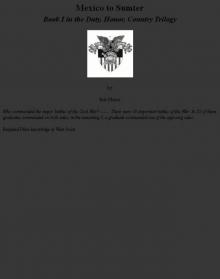 Mexico to Sumter
Mexico to Sumter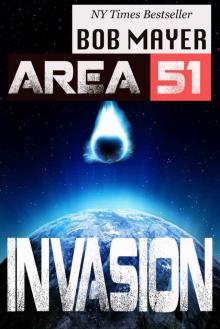 Area 51_Invasion
Area 51_Invasion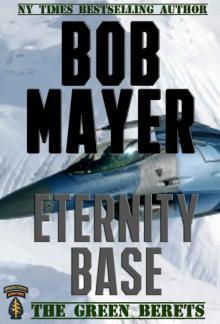 Eternity Base
Eternity Base The Line bo-2
The Line bo-2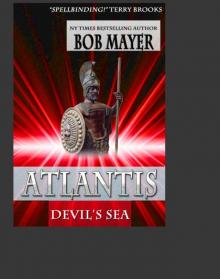 Atlantis Gate
Atlantis Gate I, Judas
I, Judas Area 51_Redemption
Area 51_Redemption Bodyguard of Lies
Bodyguard of Lies Cut Out
Cut Out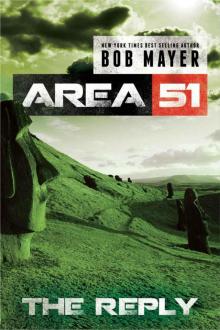 The Reply (Area 51 Series Book 2)
The Reply (Area 51 Series Book 2) Synbat tgb-3
Synbat tgb-3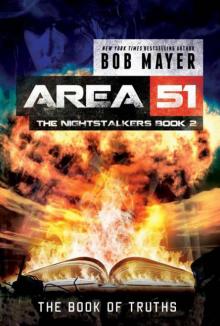 The Book of Truths a5tn-2
The Book of Truths a5tn-2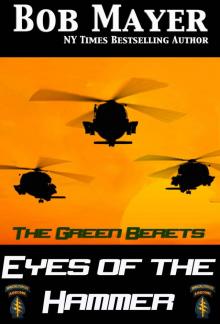 Eyes of the Hammer (The Green Beret Series)
Eyes of the Hammer (The Green Beret Series) The Gate
The Gate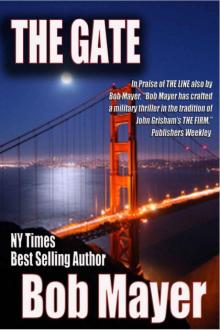 The Gate bo-1
The Gate bo-1 Synbat v5
Synbat v5 Omega Sanction
Omega Sanction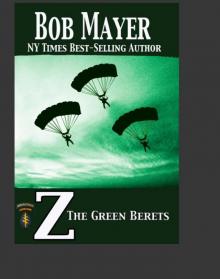 Z
Z Chasing the Son
Chasing the Son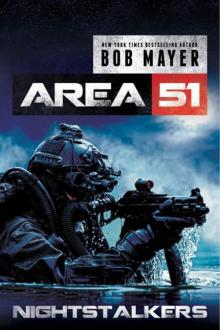 Nightstalkers
Nightstalkers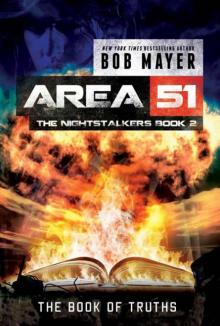 The Book of Truths
The Book of Truths Dragon Sim-13 tgb-2
Dragon Sim-13 tgb-2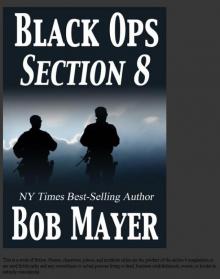 Section 8
Section 8 Chasing the Ghost v5
Chasing the Ghost v5 Psychic Warrior
Psychic Warrior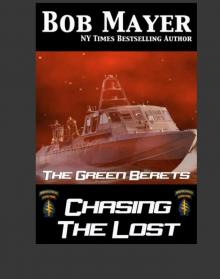 Chasing the Lost
Chasing the Lost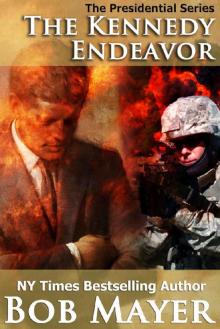 The Kennedy Endeavor (Presidential Series Book 2)
The Kennedy Endeavor (Presidential Series Book 2)